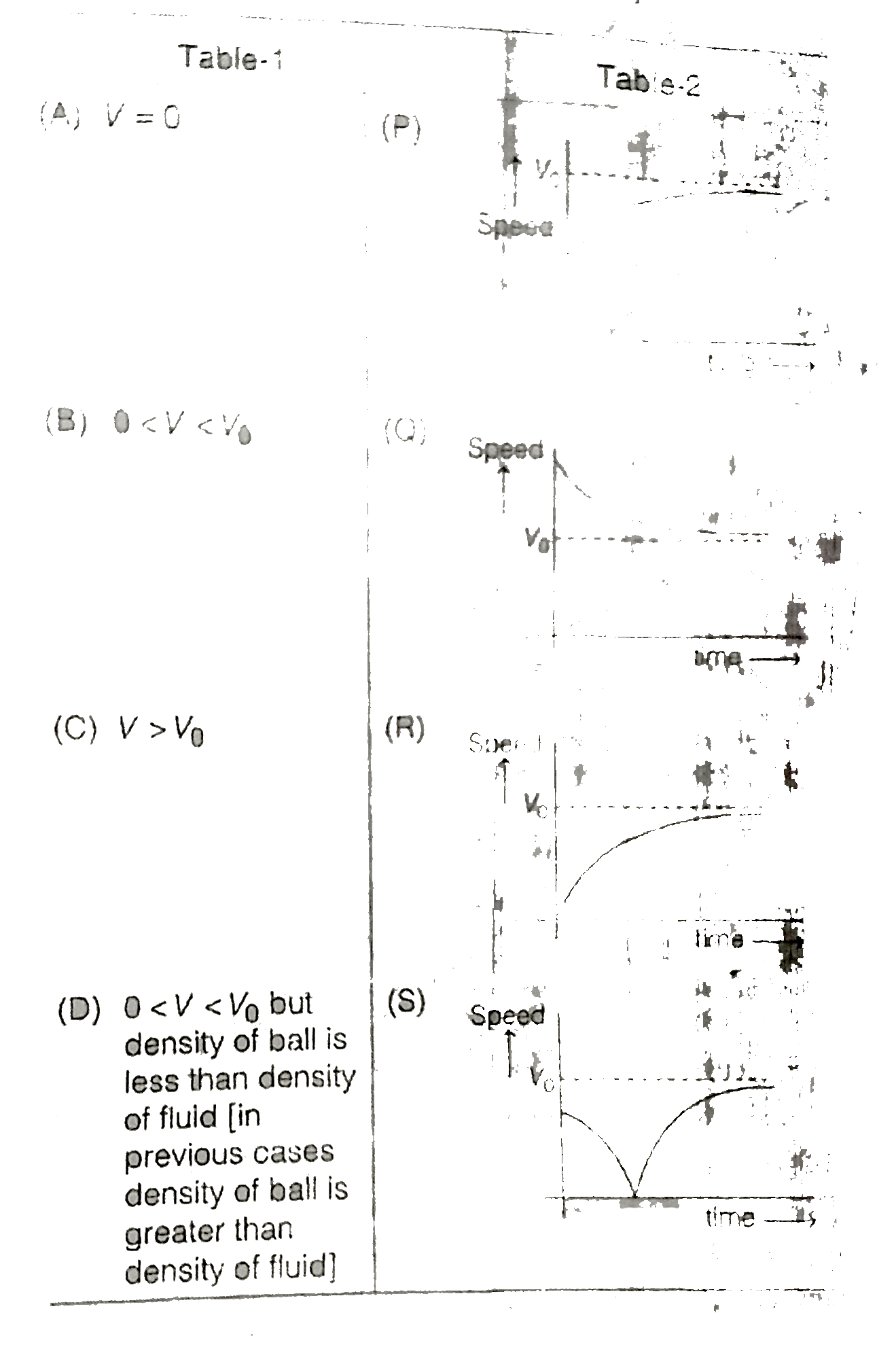The speed of a ball of radius 2 cm in a viscous liquid is 20 cm/s. Then the speed of ball of radius I cm in the same liquid is
5cms−1
10cms−1
40cms−1
80cms−1
The correct Answer is:A
To solve the problem, we will use the relationship between the speed of a sphere falling through a viscous liquid and its radius. According to Stokes' law, the speed of a sphere in a viscous medium is proportional to the square of its radius.
1. Identify Given Values:
- Speed of the first ball (V1) = 20 cm/s
- Radius of the first ball (R1) = 2 cm
- Radius of the second ball (R2) = 1 cm
2. Use the Proportionality Relation:
According to Stokes' law, the speed (V) of a sphere in a viscous liquid is proportional to the square of its radius (R):
V∝R2
This means we can write the ratio of the speeds of the two balls as:
V2V1=R22R21
3. Substitute the Known Values:
Substitute the known values into the equation:
V220=1222
This simplifies to:
V220=14
4. Solve for V2:
To find V2, multiply both sides by 20:
V2=20×14=5 cm/s
5. Final Answer:
The speed of the ball of radius 1 cm in the same liquid is:
V2=5 cm/s
- Speed of the first ball (V1) = 20 cm/s
- Radius of the first ball (R1) = 2 cm
- Radius of the second ball (R2) = 1 cm
According to Stokes' law, the speed (V) of a sphere in a viscous liquid is proportional to the square of its radius (R):
V∝R2
This means we can write the ratio of the speeds of the two balls as:
V2V1=R22R21
Substitute the known values into the equation:
V220=1222
This simplifies to:
V220=14
To find V2, multiply both sides by 20:
V2=20×14=5 cm/s
The speed of the ball of radius 1 cm in the same liquid is:
V2=5 cm/s
Similar Questions
Uniform speed of 2 cm diameter ball is 20cm/s in a viscous liquid. Then, the speed of 1 cm diameter ball in the same liquid is
View SolutionA steel ball of mass m falls in a viscous liquid with terminal velocity v, then the steel ball of mass 8m will fall in the same liquid with terminal velocity
View SolutionA ball is thrown downward In a viscous fluid with speed V. Terminal speed of ball is V0

View SolutionHow many balls, each of radius 1 cm, can be made from a solid sphere of lead of radius 8 cm?
View SolutionHow many balls, each of radius 1 cm, can be made from a solid sphere of lead of radius 8 cm?
View SolutionA spherical ball is dropped in a long column of a viscous liquid. The speed of the ball as a function of time may be best represented by the graph

View SolutionA small lead ball is falling freely in a viscous liquid The velocity of the ball
View SolutionHow many metallic balls of radius 1 cm can be recast by melting a metallic sphere of radius 8 cm?
View SolutionRaise in water level problems : A cylinderical tub of radius 12 cm contains water to a depth of 20cm. A spherical form ball of a radius 9 cm is dropped into the tub and thus the level of water is raised by H cm. What is the value of H?
View SolutionA spherical ball of radius 3 cm is melted and recast into three spherical balls. The radii of two of the balls are 1.5 cm and 2 cm. Find the diameter of the third ball.
View Solution
